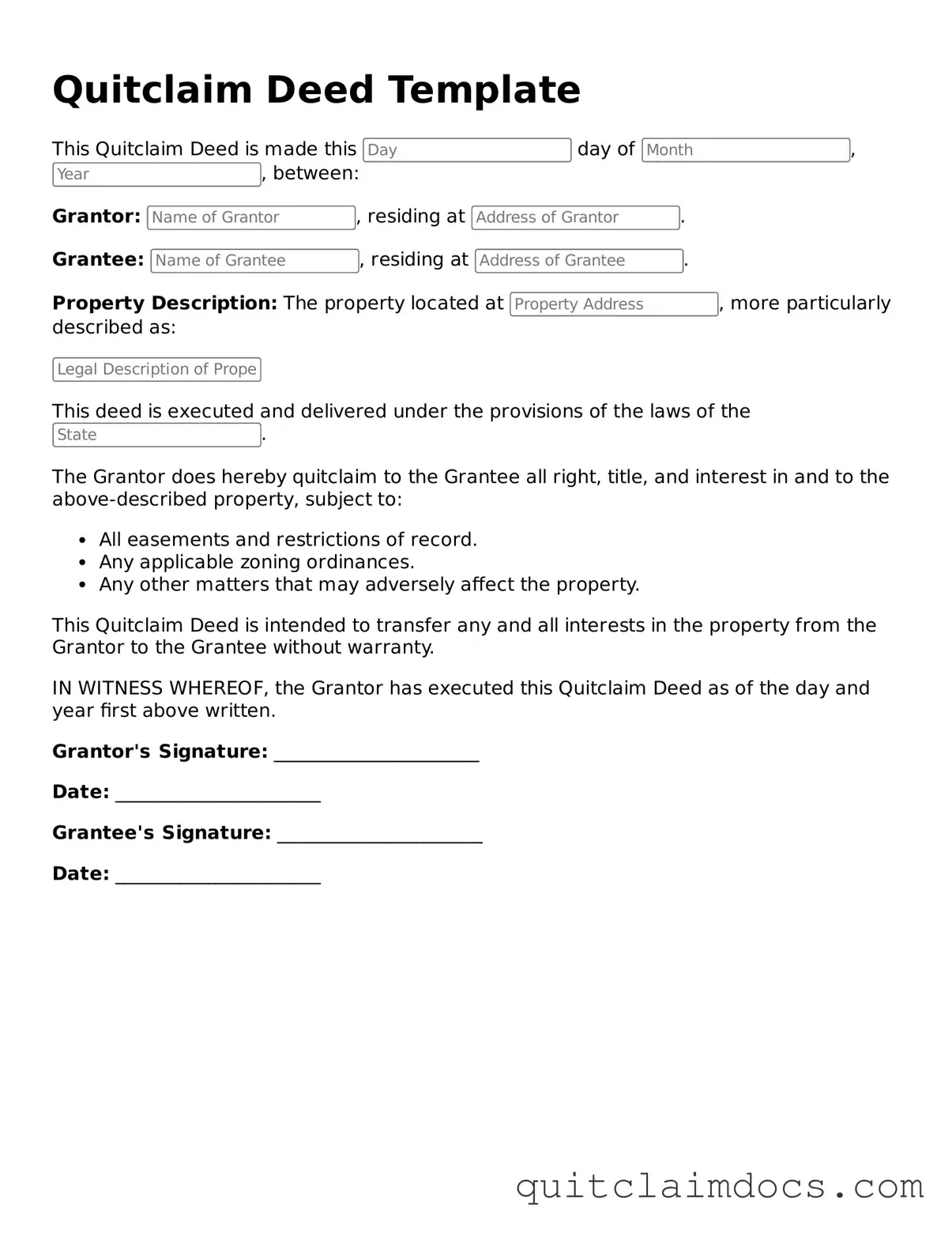Printable Quitclaim Deed Document
A Quitclaim Deed is a legal document that allows a property owner to transfer their interest in a piece of real estate to another individual without making any guarantees about the property's title. This form is often used in situations such as divorce settlements, transferring property between family members, or clearing up title issues. If you need to fill out a Quitclaim Deed, please click the button below.
Customize Quitclaim Deed Online
